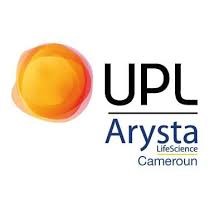Embracing Innovation and Collaboration for a Sustainable Cocoa Ecosystem
What is the main objective of the project?
Cocoa farming plays a crucial role in Cameroon, supporting nearly 800,000 smallholder farmers and significantly contributing to the country's export revenues and the global cocoa supply. However, excessive and untimely use of crop protection measures on cocoa farms contradicts the principles of Integrated Pest Management (IPM), harming soil health and reducing nutrient uptake, while negatively impacting the environment. In response to declining yields, many growers resort to deforestation as a mitigation strategy, exacerbating environmental challenges.
To address these issues, this project aims to establish a sustainable cocoa farming system in Cameroon, fully aligned with IPM principles. The project seeks to enhance yields, empower farmers, and ensure compliance with environmental and market standards. This will be achieved through the development of a disease risk forecasting model to enable efficient and targeted spraying against Black Pod Rot, the promotion of digital innovations to provide farmers with tools and information for informed decision-making and better crop protection, and the fostering of strong partnerships with industry associations, research institutions, and government agencies to strengthen the cocoa value chain.
Initially focused on various regions within Cameroon, the project aspires to extend its reach and benefits to other West African countries in the future.

"By embracing innovation and collaboration, we're nurturing the future of cocoa farming—preserving soil health, empowering farmers, and fostering a resilient, sustainable industry. This project highlights the value chain's commitment to environmental stewardship and economic resilience amid evolving challenges."
How the project contributes to sustainable cocoa production
The project promotes sustainable practices by empowering farmers and implementing early disease monitoring systems for Black Pod Rot disease, enhancing both environmental and economic sustainability.
What steps are taken during the project?
Initiation of different stakeholders to the project to build a common vision and embrace collaboration.
This project establishes an early disease monitoring and warning system, enabling farmers to anticipate and manage crop diseases more effectively.
A programme of workshops and training sessions for farmers will be implemented in collaboration with various stakeholders to support a sustainable cocoa ecosystem.
How will the outcomes be communicated to relevant stakeholders?
Through workshops, reports, and collaborative meetings, stakeholders are engaged, and results are disseminated across the cocoa supply chain.
Where is the greatest potential for stakeholders in the cocoa sector and beyond to learn from the project's outcomes?
Stakeholders can learn about sustainable farming practices, innovation, effective disease management, and integrated value chain approach.
In addition, the project offers the possibility to women to diversify their incomes through training from crop diversification and alternation outside the cocoa season to food processing to make the best use of cocoa incomes and improve their family livelihoods.
Organisations involved







